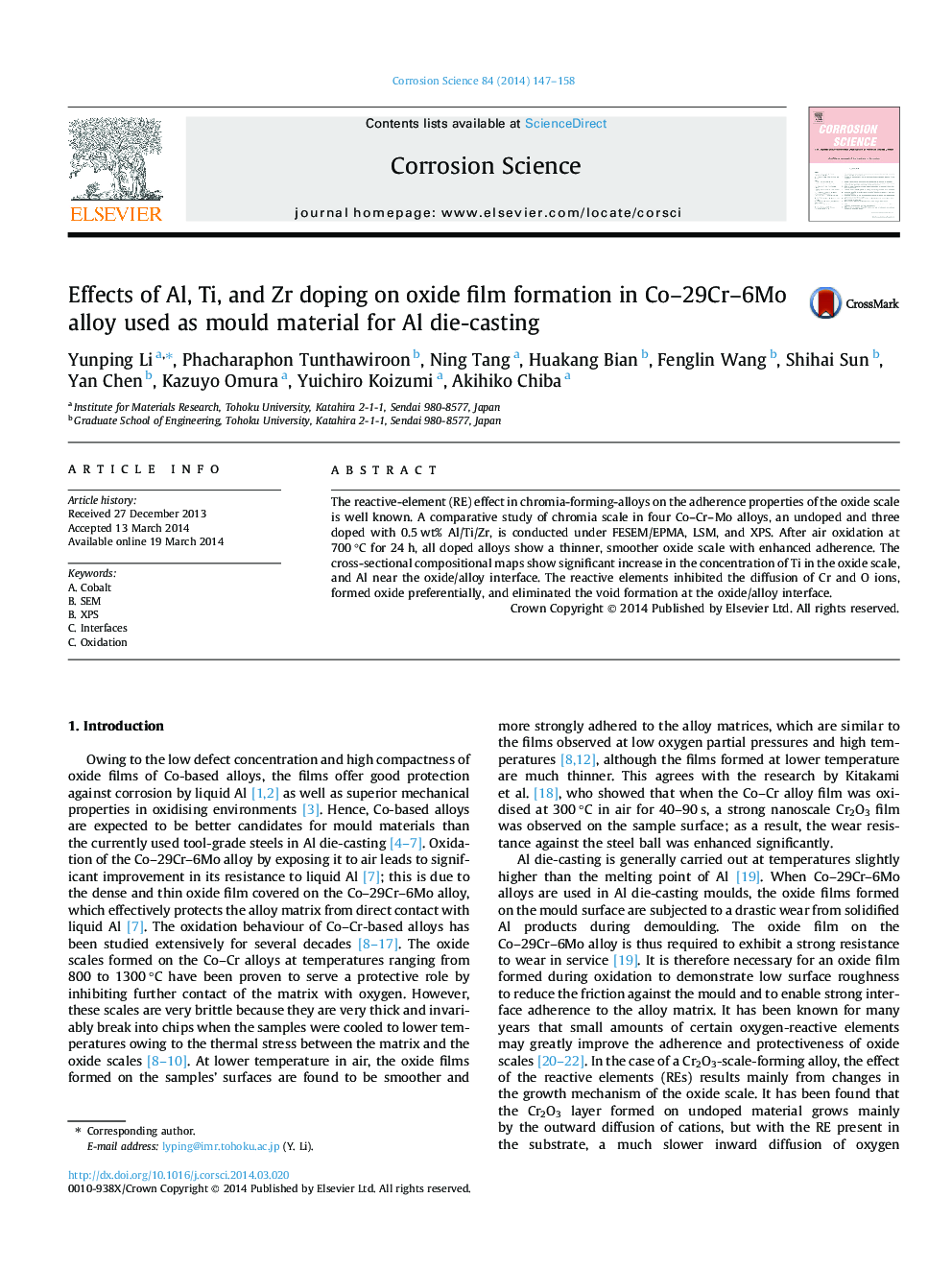| Article ID | Journal | Published Year | Pages | File Type |
|---|---|---|---|---|
| 1468854 | Corrosion Science | 2014 | 12 Pages |
•Experimental evidence of reactive element effect on oxidation of Cr–29Co–6Mo alloys.•All doped alloys show a thinner, smoother oxide scale with enhanced adherence.•The reactive elements inhibited the diffusion of both Cr and O ions.•The reactive elements inhibited void formation at the oxide/alloy interface.•A new oxide-roughening mechanism for reactive-element doped alloys is proposed.
The reactive-element (RE) effect in chromia-forming-alloys on the adherence properties of the oxide scale is well known. A comparative study of chromia scale in four Co–Cr–Mo alloys, an undoped and three doped with 0.5 wt% Al/Ti/Zr, is conducted under FESEM/EPMA, LSM, and XPS. After air oxidation at 700 °C for 24 h, all doped alloys show a thinner, smoother oxide scale with enhanced adherence. The cross-sectional compositional maps show significant increase in the concentration of Ti in the oxide scale, and Al near the oxide/alloy interface. The reactive elements inhibited the diffusion of Cr and O ions, formed oxide preferentially, and eliminated the void formation at the oxide/alloy interface.
